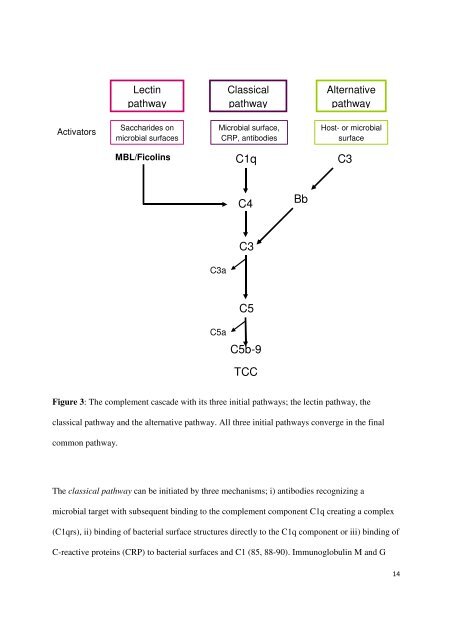Staphylococcus epidermidis - virulence factors and innate ... - Munin
Staphylococcus epidermidis - virulence factors and innate ... - Munin
Staphylococcus epidermidis - virulence factors and innate ... - Munin
You also want an ePaper? Increase the reach of your titles
YUMPU automatically turns print PDFs into web optimized ePapers that Google loves.
Lectin<br />
pathway<br />
Classical<br />
pathway<br />
Alternative<br />
pathway<br />
Activators<br />
Saccharides on<br />
microbial surfaces<br />
Microbial surface,<br />
CRP, antibodies<br />
Host- or microbial<br />
surface<br />
MBL/Ficolins<br />
C1q<br />
C3<br />
C4<br />
Bb<br />
C3<br />
C3a<br />
C5<br />
C5a<br />
C5b-9<br />
TCC<br />
Figure 3: The complement cascade with its three initial pathways; the lectin pathway, the<br />
classical pathway <strong>and</strong> the alternative pathway. All three initial pathways converge in the final<br />
common pathway.<br />
The classical pathway can be initiated by three mechanisms; i) antibodies recognizing a<br />
microbial target with subsequent binding to the complement component C1q creating a complex<br />
(C1qrs), ii) binding of bacterial surface structures directly to the C1q component or iii) binding of<br />
C-reactive proteins (CRP) to bacterial surfaces <strong>and</strong> C1 (85, 88-90). Immunoglobulin M <strong>and</strong> G<br />
14
















